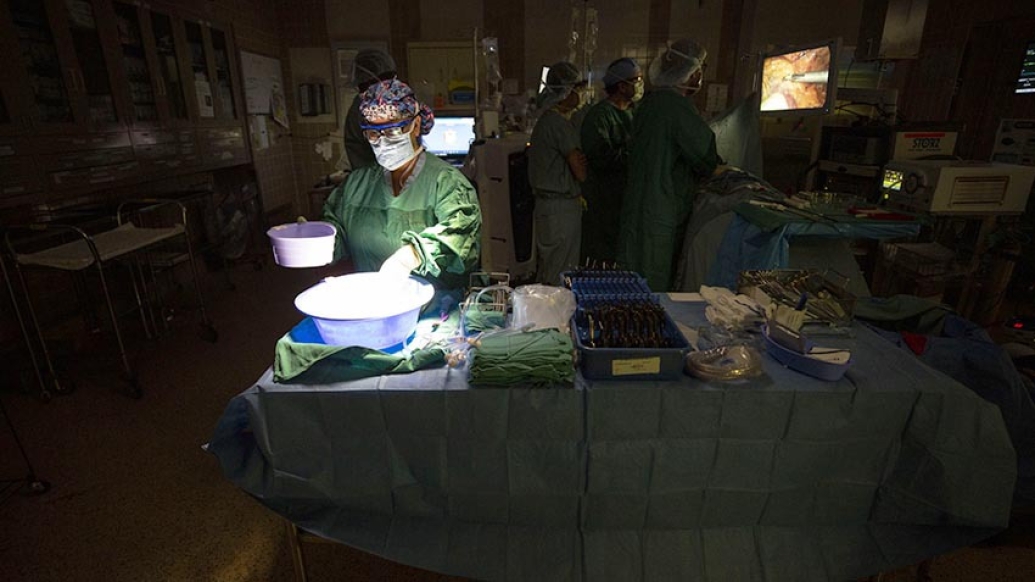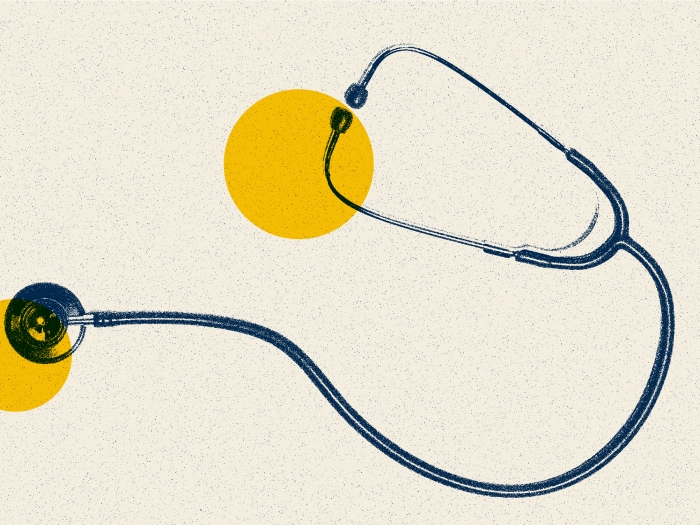Data on a broad range of common operations shows which ones will draw most on scarce resources.
4:30 PM
Author |

Editor's note: Information on the COVID-19 crisis is constantly changing. For the latest numbers and updates, keep checking the CDC's website. For the most up-to-date information from Michigan Medicine, visit the hospital's Coronavirus (COVID-19) webpage.
Interested in a COVID-19 clinical trial? Health research is critical to ending the COVID-19 pandemic. Our researchers are hard at work to find vaccines and other ways to potentially prevent and treat the disease and need your help. Sign up to be considered for a clinical trial at Michigan Medicine.
As fast and sharp as a cut from a scalpel, the coronavirus pandemic forced hospitals across America to slash elective surgical cases in March and April to slow the risk of infection and make room for surges of patients.
The pandemic disrupted or diverted the supply of resources that surgery cases need -- from protective gear and blood to intensive care beds and ventilators. And the virus started to hit the skilled nursing facilities and home health companies that many post-operative patients need to recover.
Now, as hospitals across the country start to return to doing non-emergency operations that keep their beds full and their books balanced, they need to think carefully about what resources each of those procedures will need as the pandemic continues.
A new guide could help them prioritize and plan.
Created by poring over seven years' worth of data from 17 common operations in dozens of hospitals, it's now available for free for any hospital to use.
SEE ALSO: Keeping Our Patients Safe During COVID-19
A treasure trove of data
The team that created it is based in the Michigan Value Collaborative, which pools and shares data from hospitals across Michigan in order to find opportunities to reduce variation and spend healthcare dollars more wisely.
Based at the University of Michigan, and funded by Blue Cross Blue Shield of Michigan, MVC has a treasure trove of years of data from 87 hospitals and 40 physician groups across the state.
SEE ALSO: Anticipating, Managing and Anticipating Again: The Phases of COVID-19 in Surgical Practice
When COVID-19 struck, MVC director Hari Nathan, M.D., Ph.D., and his colleagues realized that these data could help hospitals understand which operations are most resource-intensive, from incision to post-hospital care.
They started by creating customized reports for each of the hospitals that take part in MVC, to help them see patterns in their own data.
Then they made the public report, based on statewide averages. They hope it will help hospitals everywhere as they balance resource constraints with the need to get "back to business" to stay financially viable.
"This is important information, because it shows you can't do all of your backed up CABGs in one week," says Nathan, referring to coronary artery bypass graft surgery, which the review shows required intensive care unit beds in 91% of cases. They also had an average hospital stay of nine days – during which staff might have to don and discard a large amount of scarce personal protective equipment to protect against COVID-19 transmission.
MORE FROM THE LAB: Subscribe to our weekly newsletter
Then there's the question of where the patient goes after the hospital. The guide shows that only 12% of CABG patients were discharged directly home with no health aides; the majority of the rest needed in-home help while a sizable number were sent to nursing or rehabilitation facilities.
COVID-19 clusters in nursing facilities may affect bed availability – or the desire of patients to enter one if their family can't visit. And home health aides need PPE and may be in shorter supply if recovering COVID-19 patients need their care.
Resources as a key part of the restart equation
"Of course, resource use is one piece of the decision for restarting elective operations. We also have to consider the urgency for patients based on their clinical status," says Nathan, a cancer surgeon at Michigan Medicine, U-M's academic medical center, whose own practice has been reduced to the most urgent cases since Michigan's COVID-19 spike began in mid-March.
"But we suspect that the scarcity of resources imposed by COVID-19 will actually help hospitals and health systems focus on rationalizing the way they deliver surgical care in a way they haven't before, matching resources to the complexity of the patient and procedure, or even changing the locations where certain procedures are done, including outpatient centers," he says.
Data analyst Chelsea Abshire, MPH, and statistician Jessica Yaser, MPH, led the creation of the customized reports and the broad-based ones. They looked at data from insurance claims to a broad range of commercial BCBSM plans and both types of Medicare plans.
This is important information, because it shows you can't do all of your backed up CABGs in one week.Hari Nathan, M.D, Ph.D.
Yaser notes that the patients studied represent 60% of Michigan's insured population during the years they studied, and that the mix of patients and hospital types makes the data somewhat nationally representative.
U-M Department of Surgery residents J.R. Montgomery, M.D., and Craig Brown, M.D., also worked on the project.
"We hope this will help hospitals decide what they should restart first," says Montgomery. "It also showed us how much variability there is between hospitals in resource use for the same operation, well before COVID-19 arrived."
SEE ALSO: Seeking Medical Care During COVID-19
"The power of the guide we've published is the aggregated format," adds Brown. "It would be possible to pull most of these metrics by digging through the published literature on each of these types of procedure, but it's hard to compare across studies and know if they are generalizable. We tried to put it together in one single source."
The MVC team knows that other teams across the country are working to help hospitals understand what personnel with different types of training will need to be brought back to work for different types of care, and to guide the "triage" process of determining which patients whose procedures were delayed, or who have a new need for surgery, should go first and which can wait a bit longer.
SEE ALSO: Bigger Spend, Same End: Post-Hospital Care Study Suggests Medicare Could Save Money
But resource use is just as important, and most hospitals don't routinely compare resource use across different types of operations.
Scarcities can change during a pandemic, too – for instance, blood was in extremely short supply in March, but the supply eased in April as donors stepped up for rescheduled drives. And ventilators and ICU beds may be less scarce now in Michigan, but as pent-up cases begin to fill beds, it will be important to look at which operations may lead to emergency care and repeat hospitalizations within 30 days. For example, the new report shows that nearly half of patients having a pancreatectomy needed emergency care, and 20% ended up back in the hospital.
Long-term implications
Nathan notes that he and the team will continue to monitor resource use and surgical patterns as time goes on, and look for any patterns of change spurred by COVID-19. Beyond surgical care, it will be important to see what strategies physicians and patients used during the time when non-emergency surgery was shut down, and what the outcomes were – for instance, additional chemotherapy sessions for cancer patients.
Nathan, a member of the U-M Institute for Healthcare Policy and Innovation, hopes that the data they're sharing with MVC member hospitals will inform care over the long term, not just during the ramp up to post-shutdown operations.
"COVID's not going away anytime soon," he says. "We need to figure out a typical COVID census, and what that means for how many resource-intensive operations we can still do in a week and maintain our capacity to care for those who need ICUs and other limited resources. As we move forward, we also have to take care of patients who have less urgent, but still very important, surgical needs."
Like Podcasts? Add the Michigan Medicine News Break to your Alexa-enabled device or subscribe for updates on iTunes, Google Play and Stitcher.

Explore a variety of healthcare news & stories by visiting the Health Lab home page for more articles.

Department of Communication at Michigan Medicine
Want top health & research news weekly? Sign up for Health Lab’s newsletters today!





